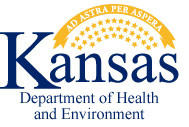It’s Severe Weather Awareness Week in Kansas

TOPEKA, Kan. — While the threat of severe weather in Kansas is year-round, March 5-9 is Severe Weather Awareness Week in Kansas, and a good opportunity to discuss the importance of emergency preparedness with your family. In 2017, the National Weather Service reported about 60 tornadoes statewide. Kansas also experiences numerous other high impact weather events, including blizzards, severe thunderstorms, and floods. “When severe weather strikes you often have only a few minutes to respond and seek shelter. It is essential for you and your family to be prepared in an emergency,” said Cherie Sage, Safe Kids Kansas. Safe Kids Kansas recommends becoming familiar with the type of weather you may encounter, prepare an emergency disaster kit, and practice your emergency plan frequently with your entire family.
Many people do not understand the difference between a watch and a warning. When conditions are favorable for severe weather to develop, a severe thunderstorm or tornado WATCH is issued. Information from weather radar, spotters, and other sources is used to issue severe thunderstorm and tornado WARNINGS for areas where severe weather is imminent. Severe weather warnings are passed to local radio and television stations, and broadcast over weather alert radios. These warnings are also relayed to local emergency management and public safety officials who then activate the local warning systems to alert communities. Remember, thunderstorms are very dangerous and can become tornadic quickly, so shelter is advised for those warnings as well. Getting to a safe shelter in advance of a storm is especially important for families with children or individuals with a disability.
Safe Kids Kansas recommends assembling an emergency disaster kit in advance. If you determine you need to take shelter, be sure every family member puts on hard-soled footwear and take your emergency disaster kit with you. An emergency disaster kit should contain:
§ non-perishable food items and water;
§ a manual can opener if your kit contains canned food;
§ blankets or sleeping bags;
§ a change of clothing for each family member;
§ a first-aid kit;
§ prescription medications;
§ sun block;
§ a flashlight and batteries;
§ a NOAA (National Oceanic and Atmospheric Administration) weather radio;
§ a set of car and house keys;
§ a whistle to signal for help;
§ a highway map that marks the counties to follow the storm;
§ identification and a credit card or cash;
§ and, any specific items you may need for children such as diapers or formula.
Additional supplies and equipment may be necessary for family members with disabilities or medical conditions.
Don’t forget your pets will also need supplies, including food, water, collars and leashes. For smaller animals you may want to have a crate or a cage to help keep them safe and close.
Another good preparation tool is to designate an out-of-state friend or family member as your family contact in case weather strikes while your family members are apart. “Each family member should know the phone number of the emergency contact person and call to alert them they are safe and where they are going to be,” said Sage.
Safe Kids Kansas reminds parents to develop an emergency plan for severe weather in advance, and practice the plan often with your children, just as you do for other emergencies, such as a house fire. Be sure to include scenarios when you are at home, work, school or outdoors.
If a tornado warning is issued, your family should immediately go to your designated tornado shelter which may be a storm shelter or a basement. If you are not able to get underground, then move to an interior room, hallway, bathroom, or closet on the lowest level. If possible, get under a sturdy piece of furniture to protect you from debris, and stay away from windows.
If you are in a vehicle or mobile home, get out immediately and head to the nearest shelter. Do not try and outrun a tornado in your vehicle. If you are outside, lie flat in a low location, and cover your head with your hands. Do not take shelter under an overpass or bridge. Flash flooding causes more weather-related deaths annually, so be aware of your surroundings if you seek shelter in a ditch or ravine.
After a severe storm has passed, be careful to watch for fallen power lines and structures that may be weakened from storm damage. Use a flashlight to inspect your home. Do not use candles, matches or lighters, as there may be leaking natural gas pipes or fuel tanks nearby.
Safe Kids Kansas also recommends that your family learn basic CPR first aid and teach young children how to call 9-1-1. Severe weather can strike at any time with little or no notice. The best way to protect yourself and your family members is by being prepared in advance.









